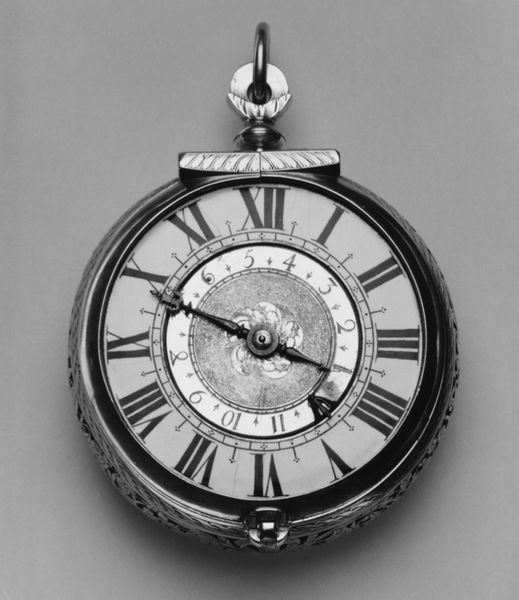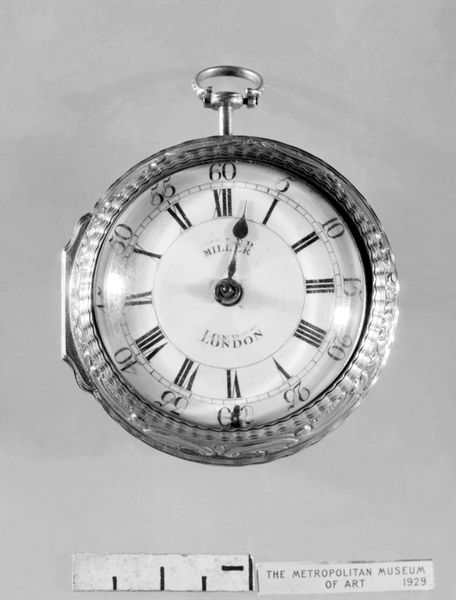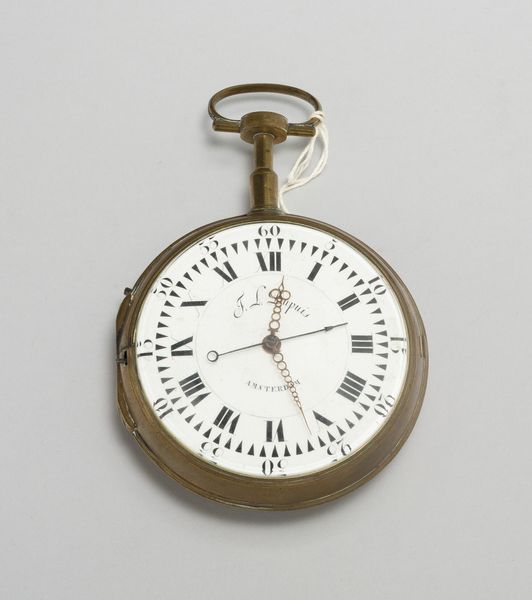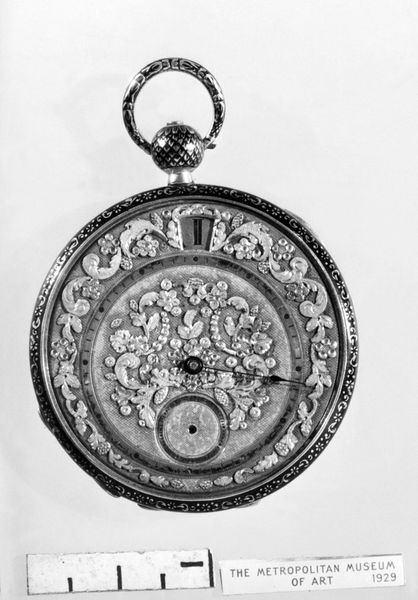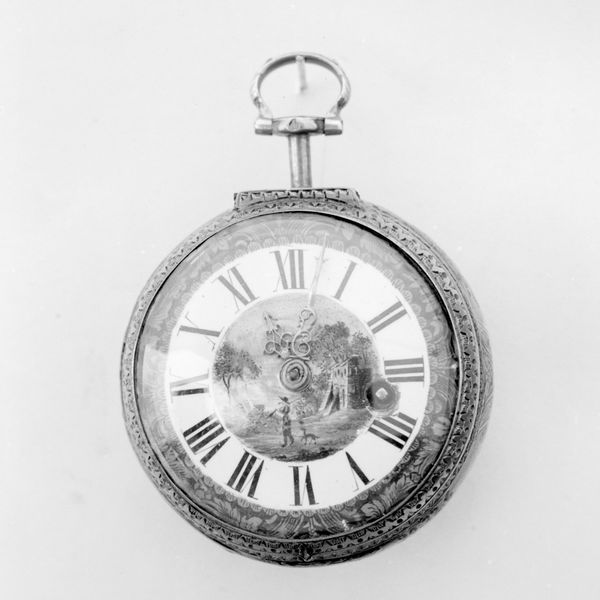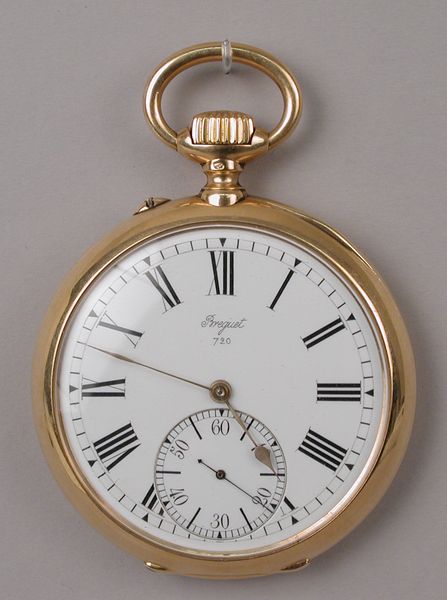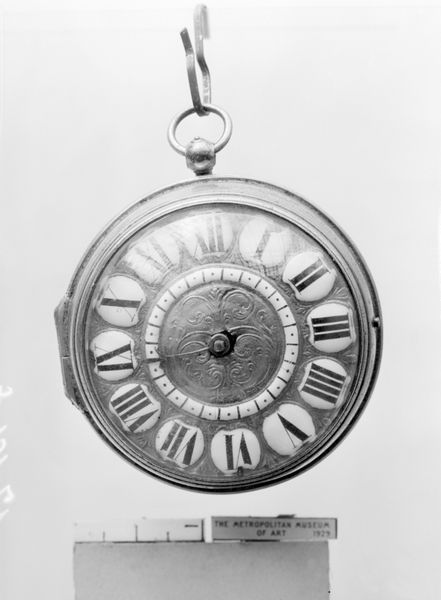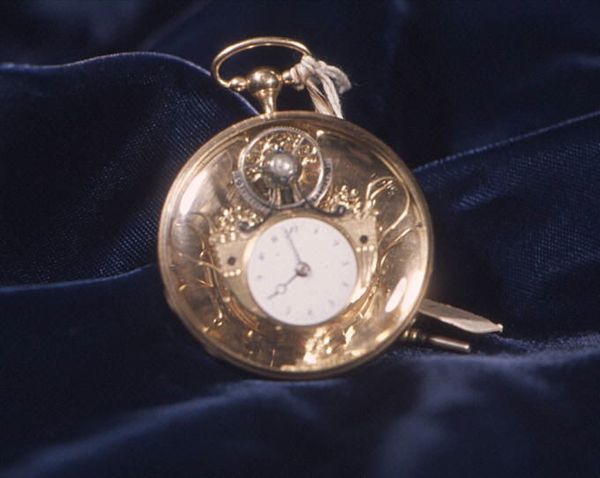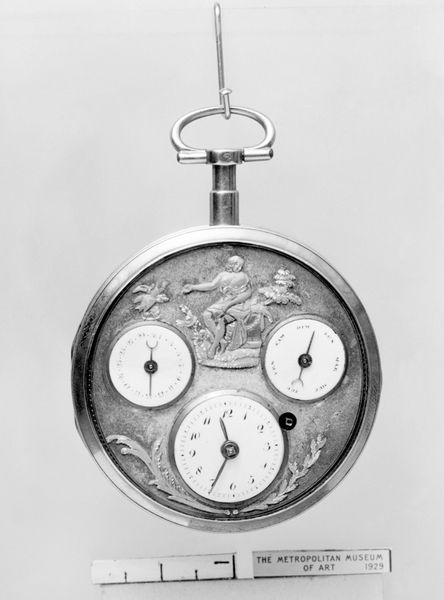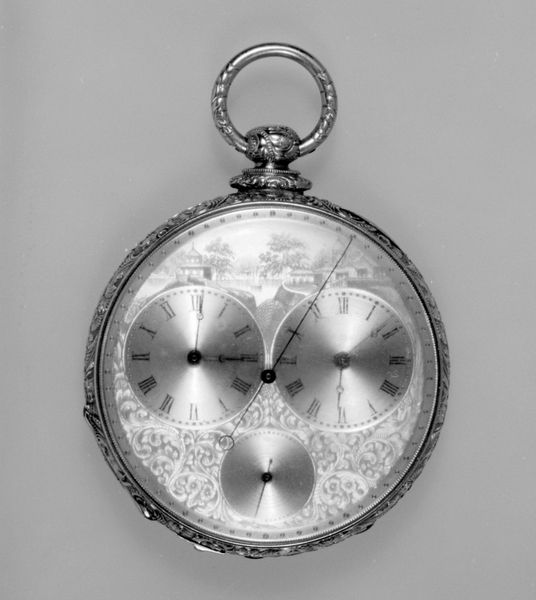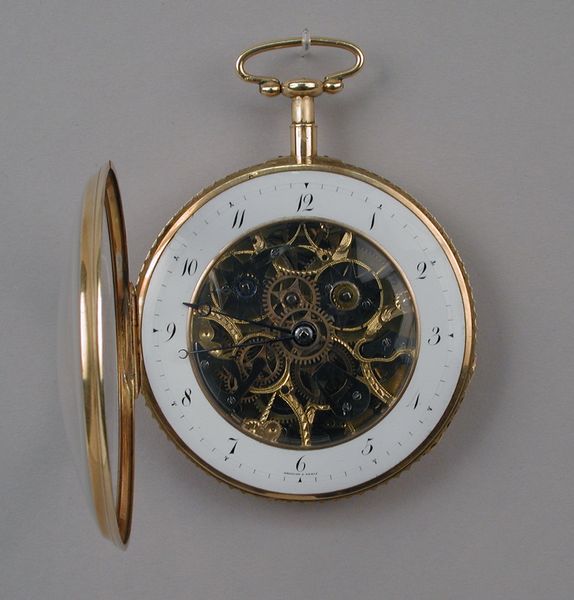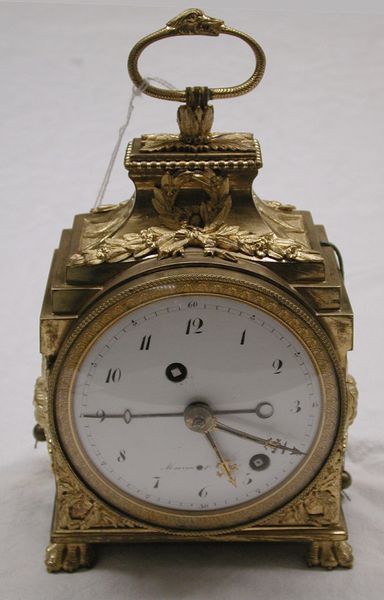
metal, sculpture
#
medieval
#
metal
#
sculpture
#
sculpture
#
decorative-art
Dimensions: Overall: 2 1/4 × 2 in. (5.7 × 5.1 cm)
Copyright: Public Domain
Editor: This beautiful object is a portable horizontal sundial made by Jaques Lucas between 1675 and 1685. It's crafted from metal and currently held at the Metropolitan Museum of Art. It strikes me as both functional and decorative. What cultural echoes do you hear when you look at it? Curator: I see a fascination with time, not just as a measure, but as something precious and to be understood. The sundial becomes a symbolic link, doesn’t it, connecting humanity to celestial movements, a visible manifestation of a divine order. The bird on the gnomon is more than ornamentation. Editor: Oh, interesting! What kind of symbolism are you suggesting? Curator: Consider the historical context – a period steeped in both scientific discovery and strong religious beliefs. The bird is typically a dove. How might that connect to notions of peace, divine guidance, and even the Holy Spirit? Furthermore, a sundial isn't just a way of measuring the hours; it requires understanding one's place within a latitude. So what happens when time becomes about your place on earth and the sun's position to you, at one place? What kind of person carried it? Editor: A traveler, perhaps? Or someone very wealthy? Curator: Perhaps someone charting the self! Its portability and craftsmanship denote both scientific pursuit and wealth but the sundial reflects a personal journey in space and time, a spiritual reflection of human existence on earth. Do you find its symbolism convincing? Editor: Yes, I see how this little object reflects something so much larger – our place in the cosmos and the passage of time. Thank you, that gave me so much to think about! Curator: It did me as well! It's amazing how this sundial bridges temporal measurements and human values.
Comments
No comments
Be the first to comment and join the conversation on the ultimate creative platform.
